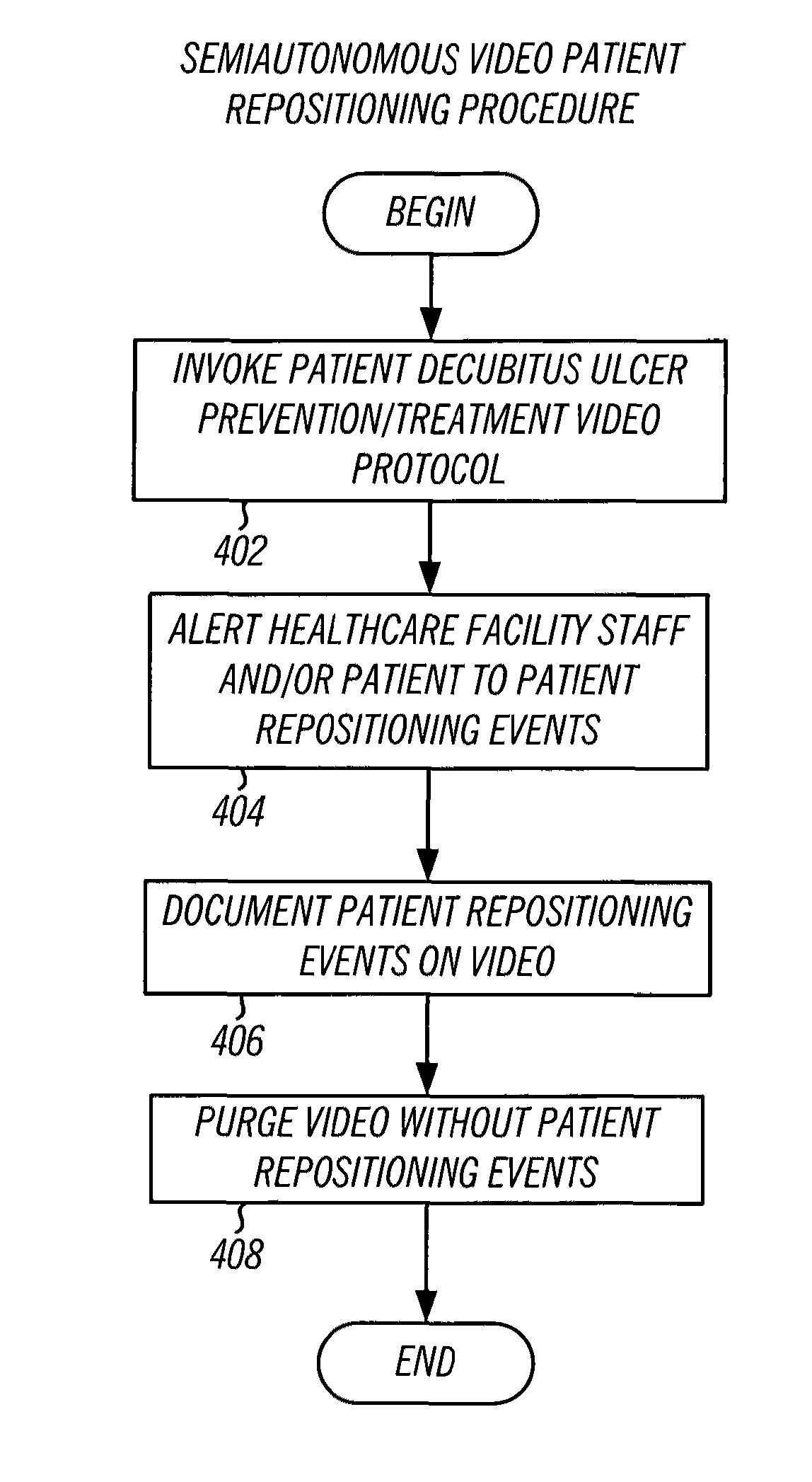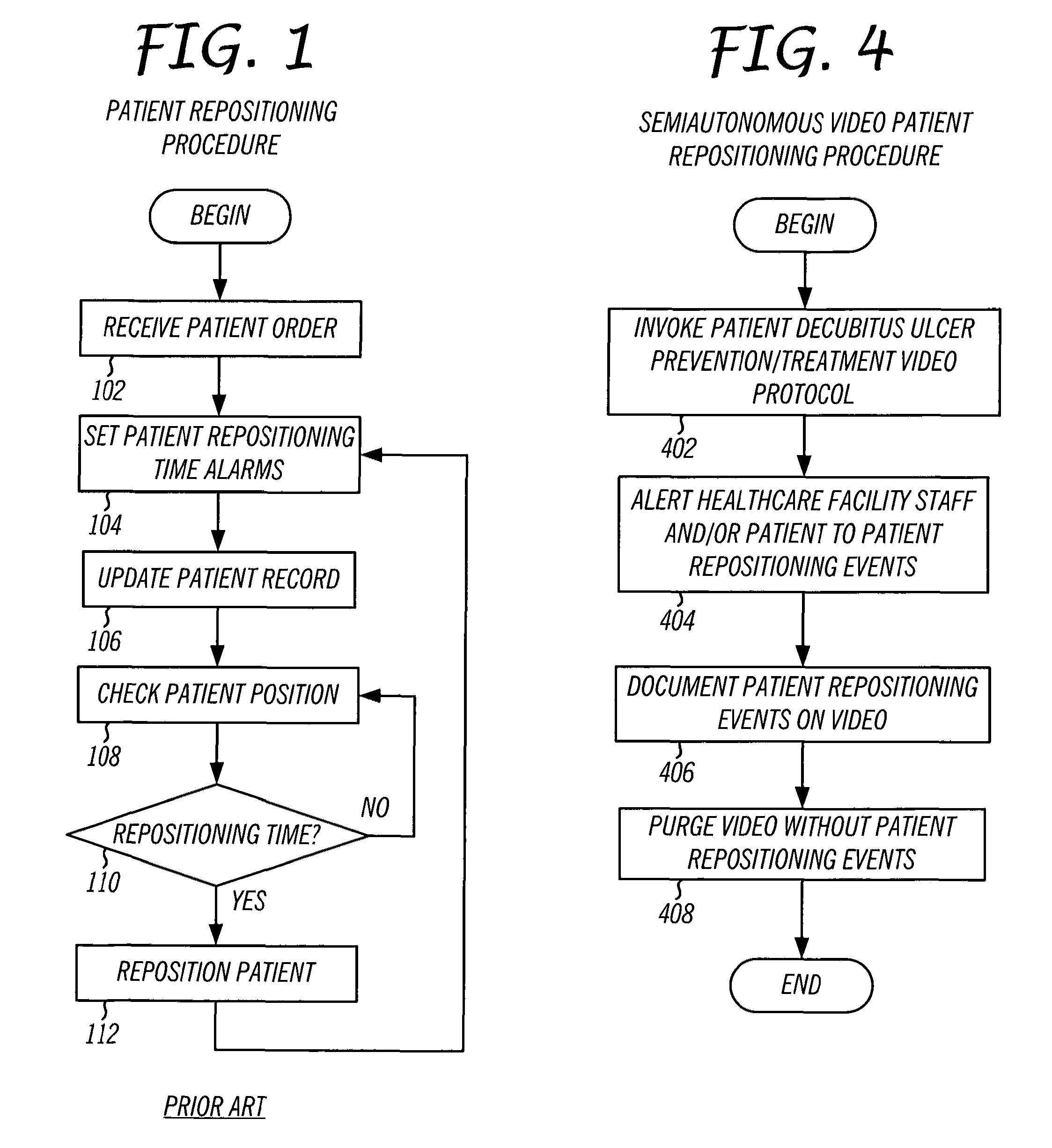System and method for using a video monitoring system to prevent and manage decubitus ulcers in patients
a video monitoring and patient technology, applied in the field of system and method for using a video monitoring system, can solve the problems of bedridden patients, significant amount of hidden tissue damage, tissue necrosis, etc., and achieve the effect of avoiding duplication and unnecessary turning
- Summary
- Abstract
- Description
- Claims
- Application Information
AI Technical Summary
Benefits of technology
Problems solved by technology
Method used
Image
Examples
Embodiment Construction
[0045]
Element Reference Number Designations200:Patient movement monitoring system210:Camera control device211:Processor unit212:Network controller213:Video processor214:Primary nonvolatile memory215:Secondary nonvolatile memory216:Video camera217:Video monitor218:Medical procedure remote interface220:Local surveillance sub-system222:Medical procedure remote interface224:Autonomous sensing device226:Medical procedure / pillow speaker interface230:Patient room240:Distribution network250:HCF (Nurse) station260:Nurse monitor device261:Processor unit262:Network controller263:Video processor264:Primary nonvolatile memory265:Secondary nonvolatile memory266:Video camera267:Video monitor / touchpad268:Audible alarm269:Manual interface device270:Patient monitoring system310:General purpose computer321:Patient bed341:Transmission medium342:Network switch343:Broadband connection344:Network storage345:Patient administration346:Network server / router / firewall348:Network system administration700:Proced...
PUM
 Login to View More
Login to View More Abstract
Description
Claims
Application Information
 Login to View More
Login to View More - R&D
- Intellectual Property
- Life Sciences
- Materials
- Tech Scout
- Unparalleled Data Quality
- Higher Quality Content
- 60% Fewer Hallucinations
Browse by: Latest US Patents, China's latest patents, Technical Efficacy Thesaurus, Application Domain, Technology Topic, Popular Technical Reports.
© 2025 PatSnap. All rights reserved.Legal|Privacy policy|Modern Slavery Act Transparency Statement|Sitemap|About US| Contact US: help@patsnap.com



